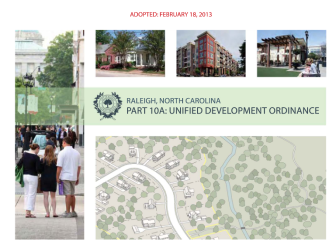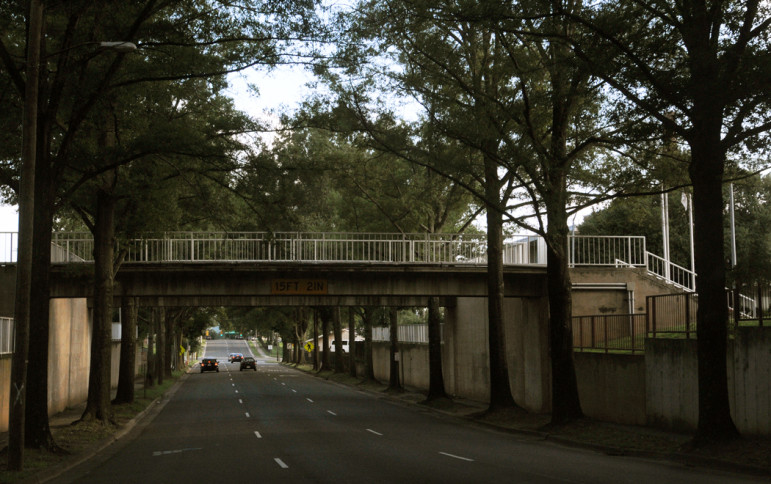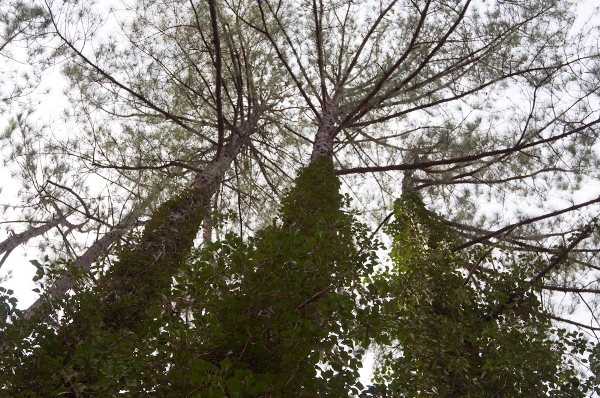The Comprehensive Planning Committee on Wednesday adopted six tree conservation alternates that site developers will be able to use when selecting which trees to conserve on a site.

Raleigh\’s Unified Development Ordinance
The six alternates were originally recommended by the Planning Commission for inclusion in the Unified Development Ordinance, adopted in 2013. The City Council at that time chose not to include them.
In a city document, the six alternates are outlined in full. They function on the principle of “equal or better,” meaning it must be determined that the alternate which the site developer is choosing is equal or better than a tree conservation area mandated by current regulations.
One alternate item on that document states, “The proposed alternate is clearly a healthier and more viable stand of trees than the required thoroughfare tree conservation area as verified in a comprehensive comparative report that provides silvicultural and arboricultural data prepared by a North Carolina Registered Forester.”
Another item states, “The proposed alternate is a fully stocked stand of trees comprised of dominant and co-dominant species of a higher species value rating than the dominant and co-dominant species comprising the required thoroughfare tree conservation area that is also fully stocked.”
In the latter case, the value ratings for species “are defined in the ‘Tree Species Ratings for Raleigh Tree Conservation Areas.’”
The “equal or better” clause caused much discussion among the comprehensive planning committee, which is composed of Councilor Gaylord, Councilor Crowder, Councilor Stephenson, and Councilor Weeks.

Karen Tam / Raleigh Public Record
Raleigh is known for its tree-lined streets
The discussion centered on having a seventh alternate that would used to give some flexibility for the site developers and others involved in the process if they uncovered a situation that demonstrated “equal or better” but did not fit the rigid requirements of the first six alternates.
Some speaking to the Committee said that the seventh, more ambiguous alternate would make things difficult for staff and become a “discretionary” alternate, which would cause legal problems.
Along with the motion to adopt the six alternates, the formation of a seventh alternate was approved as well, with the caveat that it would be sent to the City Attorney’s office to make the language non-discretionary but still retain some flexibility.
The Committee also voted on two additional topics relating to tree conservation—the preservation of trees along thoroughfares and the related goal of having tree-lined corridors in Raleigh.
For the first of those two items, Travis Crane, Planning and Zoning Administrator for the City, had reached out to the “Tree Vigilance Committee” for their input.
The “Tree Vigilance Committee” advocated for placing “tree conservation among thoroughfares” in the “secondary tree conservation area” column.
They stated placing “tree conservation among thoroughfares” into the “primary tree conservation area” column was “not beneficial to the intent of the ordinance providing reasonable flexibility with regard to the many variables associated with the development of a site plan or subdivision.”
A motion was made to move “tree conservation among thoroughfares” from the primary area column to the secondary area column. The vote was split, with Councilors Gaylord and Weeks voting ‘yes’ and Councilors Crowder and Stephenson voting ‘no.’
The motion to have City staff plan a way to map “frontages” with the goal of tree-lined corridors was met with unanimous approval.
